In Germany, films were an important medium for experimentation and the promotion of arts and ideas. The artistic avant-garde found in films a space to develop prevailing ideas in society, defined by subjective drama and a distorted reality.
In order to expand the context surrounding the life and work of Ernst Saemisch, Colegio de San Ildefonso and Ernst Saemisch A.C. invite exhibition visitors to the screening of 14 films from German Expressionism, produced between 1919 and 1931.
Film exhibition program curator and speaker: Rebeca Jiménez Calero
Film exhibition program
The life and work of Ernst Saemisch span almost all 20th century. Over several decades and countries, the German-born painter shaped a style in which the historical events he experienced —such as the First and Second World Wars—, as well as the artistic movements and schools he encountered, were reflected.
At the beginning of 20th century, Germany was seriously affected by the First World War, a pessimistic atmosphere permeated all German society and, consequently, its artistic expressions. Romanticism from the previous century influenced a generation of artists who, taking as a starting point the exploration of the link between man and nature, as well as the internal conflicts caused by existential crisis, decided to continue on the same path, but with a strong visual inclination towards the Gothic and its somber and terrifying environments. The German psyche began to express all the emotional baggage within, its anguish in the face of uncertainty about the future.
Expressionist painting was characterized by showing a free interpretation of nature, through strong and distorted lines, a heap of figures with contrasting colors that emphasized moods and externalized the creator’s inner world, which in turn, reflected a collective feeling.
Part of Ernst Saemisch’s work can be considered part of German Expressionism: “His art captures the essence of a period marked by agitation and suffering, and at the same time reflects human resilience and the search for meaning despite adversity”.
In his paintings we can find scenes of nature, daily life landscapes and portraits with strong lines and contrasts typical of Expressionism. Although by the end of his life he opted for Abstractionism, it is interesting to see how, to a great extent, his artistic production returns to his roots in early 20th century Germany.
Just as in painting, cinema was another medium through which Expressionism made significant contributions and established itself the first cinematic schools, as the cinematograph had only a few years since its invention. It was in 1895 when Lumière brothers patented their invention; it gave the illusion of movement to static images, and even in its early years it was considered just a fair attraction, some people saw in that device the means to tell stories and create new worlds.
The cinematograph peaked in the first two decades of the 20th century, in just a few years, it evolved from showing daily life scenes lasting a few seconds to short stories of several minutes in one reel, and eventually, stories that required multiple film reels.
By the early 1910’s, it was already considered as an art form and an industry. While in the United States the industry was dominated by its focus on business and entertainment, in Europe cinema emphasized its role as medium of artistic expression and, like other disciplines, aligned itself with the avant-garde, which aimed to break with canons of the last century.
This way, artists created Surrealist, Dadaist, and Futurist works, but the one that contributed the most both narrative and visual elements, was the German Expressionism, which produced significant works throughout the 1920’s, the influence of these films continues to this day.
Cinema in the Weimar Republic was made possible thanks to the creation of the UFA, a state film production company, in 1917; it was established with the idea of competing with major American productions that were distributed worldwide. Shortly after, UFA was consolidated, and in its most prolific phase, it managed to produce more than 600 films per year. It was during this period that Expressionism emerged in cinema with Robert Wiene’s masterpiece, The Cabinet of Dr. Caligari (1920). From then on, other titles appeared that would later be considered part of the cinematic canon.
To further explore the context in which the exhibition The Intimate Nature of Life. Ernst Saemisch (1902-1984) is developed, you are invited to the German Expressionist cinema exhibition program, where connections between the painter’s work and the images created by filmmakers of that time.
Rebeca Jiménez Calero
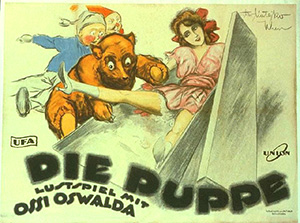
THE DOLL / DIE PUPPE
- Sunday, January 19, 2025. 12:00 hrs.
- Cine Goya, Colegio de San Ildefonso
- Dir. Ernst Lubitsch | 1919 | 66 min.
The first film in this program doesn’t belong to Expressionism, but it exemplifies the type of films produced in Weimar Germany shortly before the emergence of the moment. It also showcases Lubitsch’s comedic talent before, he emigrated to the United States during the war.
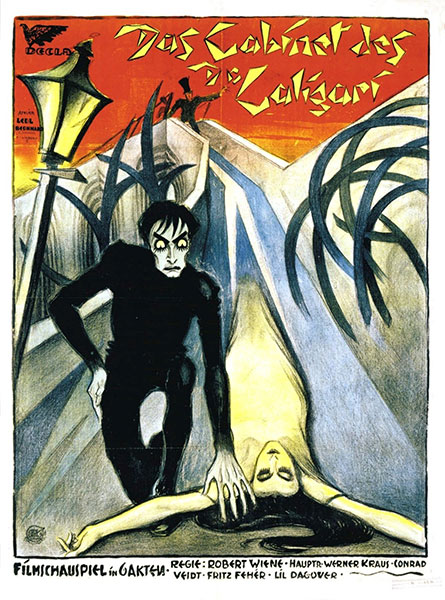
THE CABINET OF DR. CALIGARI / DAS CABBINET DES DR. CALIGARI
- Sunday, January 26, 2025. 12:00 hrs.
- Cine Goya, Colegio de San Ildefonso
- Dir. Robert Wiene | 1920 | 71 min.
Considered the starting point of German Expressionist cinema, this film, with its dark setting and disturbing story, marked the beginning of one of the most significant moments in film history.
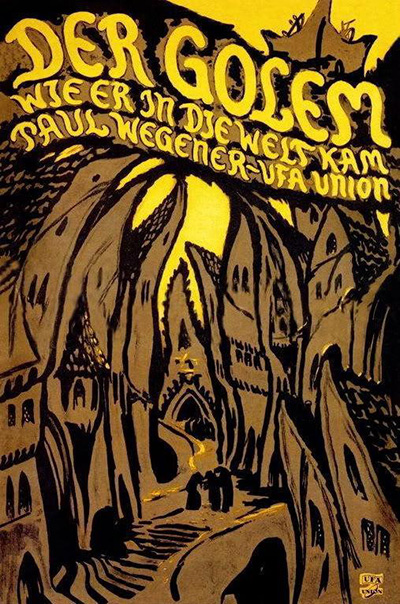
THE GOLEM: HOW HE CAM INTO THE WORLD / DER GOLEM, WIE ER IN DIE WELT KAM
- Sunday, February 9, 2025. 12:00 hrs.
- Cine Goya, Colegio de San Ildefonso
- Dirs. Paul Wegener y Carl Boese | 1920 | 85 min.
Wegener brings to the big screen, for the second time, the legend of the Prague rabbi who creates a clay figure that obeys his
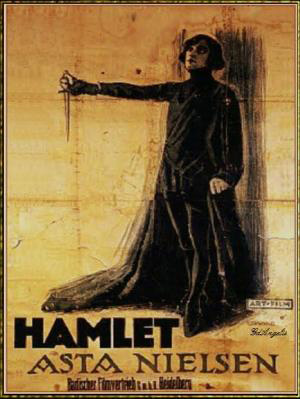
HAMLET
- Sunday, February 16, 2025. 12:00 hrs.
- Cine Goya, Colegio de San Ildefonso
- Dirs. Svend Gade y Heinz Schall | 1921 | 131 min.
Filmed in Berlin with evident Expressionist influence, this adaptation of Shakespeare’s plays features Danish actress Asta Nielsen in the leading role.
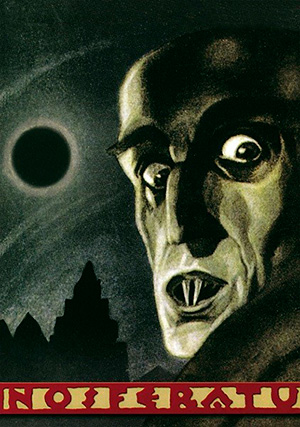
NOSFERATU: A SYMPHONY OF HORROR / NOSFERATU, EINE SYMPHONIE DES GRAUENS
- Sunday, February 23, 2025, 12:00 hrs.
- Cine Goya, Colegio de Saan Ildefonso
- Dir. F.W. Murnau | 1922 | 94 min.
The first film adaptation of Bram Stoker, Drácula. Max Schreck’s portrayal of the vampire became an iconic image of Expressionist cinema.
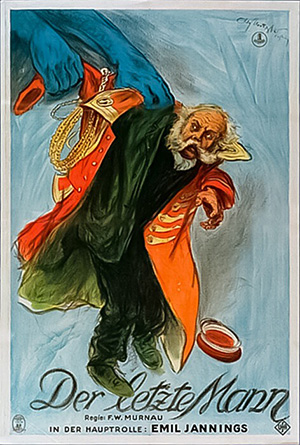
THE LAST LAUGH / DER LETZTE MANN
- Sunday, March 9, 2025. 12:00 hrs
- Cine Goya, Colegio de San Ildefonso
- Dir. F.W. Murnau | 1924 | 90 min.
A new example of Murnau’s mastery, this time in a story of everyday life, infused with great dramatic and visual strength.
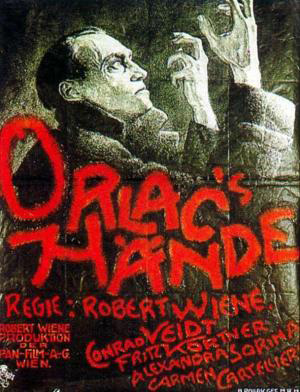
THE HANDS OF ORLAC / ORLACS HÄNDE
- Sunday, March 16, 2025. 12:00 hrs.
- Cine Goya, Colegio de San Ildefonso
- Dir. Robert Wiene | 1924 | 92 min.
Conrad Veidt plays a pianist who receives a hand transplant from a murderer. The hands take control of his will, turning his life into a horror story.
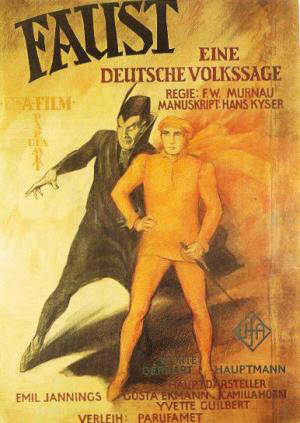
FAUST / FAUST: EINE DEUTSCHE VOLKSSAGE
- Sunday, March 23, 2025. 12:00 hrs.
- Cine Goya, Colegio de San Ildefonso
- Dir. F.W. Murnau | 1926 | 106 min.
Murnau adapts Goethe’s classic tale in which Mephistopheles tries to corrupt a mans’ soul to win a bet against God.
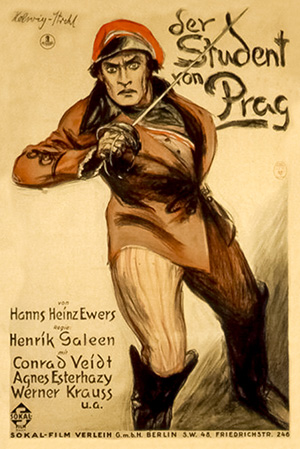
THE STUDENT OF PRAGUE / DER STUDENT VON PRAG
- Sunday, March 30, 2025. 12:00 hrs.
- Cine Goya, Colegio de San Ildefonso
- Dir. Henrik Galeen | 1926 | 134 min.
Inspired by Faust legend, this film, tells the story of a student who sells his reflection in exchange for wealth. It is one of the earliest cinematic explorations of the Doppelgänger myth-the concept of an evil twin.
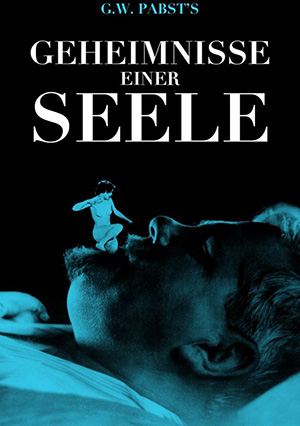
SECRETS OF A SOUL /GEHEIMNISSE EINER SEELE
- Sunday, April 13, 2025. 12:00 hrs.
- Cine Goya, Colegio de San Ildefonso
- Dir. G.W. Pabst | 1926 | 75 min.
The “New Objectivity” movement of German Expressionism is reflected in this film, which applies psychoanalytic theories to depict a tormented soul.
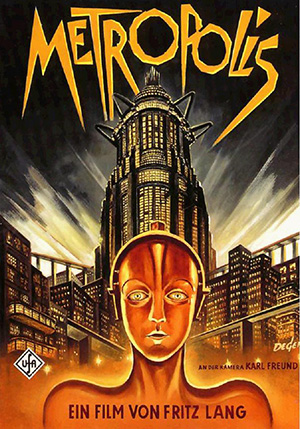
METRÓPOLIS / METROPOLIS
- Sunday, April 20, 2025. 12:00 hrs.
- Dir. Fritz Lang | 1927 | 149 min.
One of the UFA’s most ambitious and expensive productions Metropolis is a cornerstone of science fiction movies and, perhaps, Fritz Lang’s most famous film.
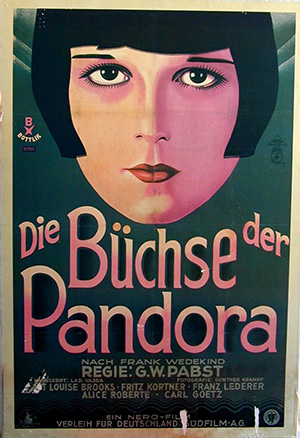
PANDORA’S BOX / DIE BÜCHSE DER PANDORA
- Sunday, April 27, 2025. 12:00 hrs.
- Dir. G.W. Pabst | 1929 | 133 min.
One of the last silent films of the era. The story follows a seductive woman who leads several men, and herself, to perdition.
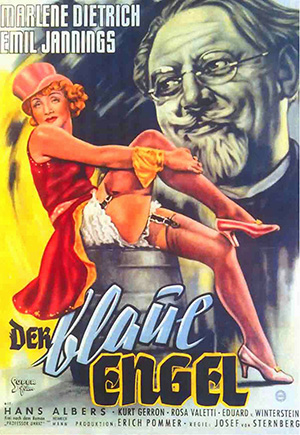
THE BLUE ANGEL / DER BLAUE ENGEL
- Sunday, May 11, 2025. 12:00 hrs.
- Dir. Josef von Sternberg | 1930 | 107 min.
The life of a strict professor spirals out of control when he falls in love with a night club singer. This film, also launched Marlene Dietrich’s international stardom.
A film from the holdings of the Friedrich-Wilhelm-Murnau-Stiftung (www.murnau-stiftung.de) in Wiesbaden.
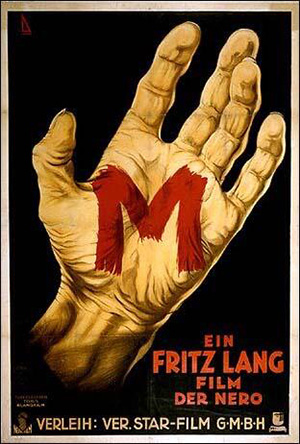
M / M – EINE STADT SUCH EINEN MÖRDER
- Sunday, May 18, 2025. 12:00 hrs.
- Dir. Fritz Lang |1931 | 109 min.
The film tells the story of a city devastated by a child killer. Lang makes splendid use of sound.